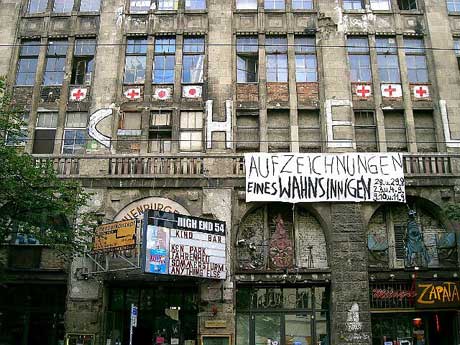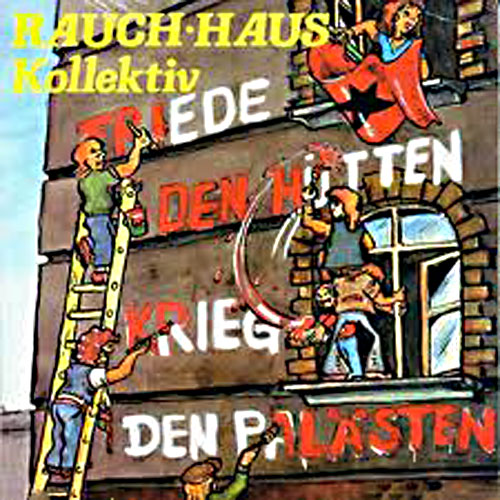Almost all Berlin lovers have been to Tacheles at least once, and no doubt some have wondered how it happened that a building (and a project) which was originally a squat has transcended its anarcho-art punk roots and become a fashionable, guide-book standby of Berlin and helped turn the surrounding neighborhood into one of the hippest in Berlin.

The meaning of the word “alternative” has now fade, and lost part of its original connotation of opposition to the established order. Now it seems to have instead become representative of anything that is merely considered “cool.” Tacheles was once a both blueprint and trailblazer of the recovery of urban space and artistic production in the Berlin of the 90s, i.e., just after the fall of the wall. At that time, as we all know, the city experienced an intense period of cultural upheaval, coupled with strong advocacy for new social modes. What is now called Tacheles had formerly been a mall and during the Second World War was used by the Nazis to host the administration and organization of various departments and housed prisoners of war. The building was badly damaged by bombing, but not completely destroyed, and was to be demolished in 1990.
In neighborhoods like Mitte, PrenzlauerBerg and Friedrichschain a subculture sprung up promoting autonomy and cultural freedom. Its protagonists decided to occupy this space to promote alternative development.
Tacheles, a word which in Hebrew means “revealing” “communicate” or “frank speech” quickly became well known for the atmosphere of the building and the number of projects that were carried out, like performances, concerts, exhibitions of paintings, sculptures, installations. This remains today the basic idea, and the programming now was extended to plays, films, workshops, concerts, literary events and parties. The center was given recognition by the government in Berlin and received a series of annual grants to help finance part of the many projects that it conducted. The remaining funding comes from the rental of studio spaces to artists and the profits from the bar and cinema.
But in the meantime, the district of Mitte has become fashionable, and the influx of tourists has changed the nature of this project and the spirit of its participants over the years, Tacheles is still a meeting point for artists in Berlin around the world, but the surrounding context has changed radically. The capital and ongoing investments in business ventures and hotel today put this project at risk to falling victim to rabid consumerism.
For more information, visit the official website: www.tacheles.de?
 menschauser
menschauser
The building in Orianenburgerstrasse could find its days numbered to make room for a complex of restaurants, hotels and luxury shops. For this reason, if you want to know it before it disappears we suggest renting apartments in Berlin to enjoy the events and activities, or just have a beer at the bar which is part of Tacheles.

 English
English
